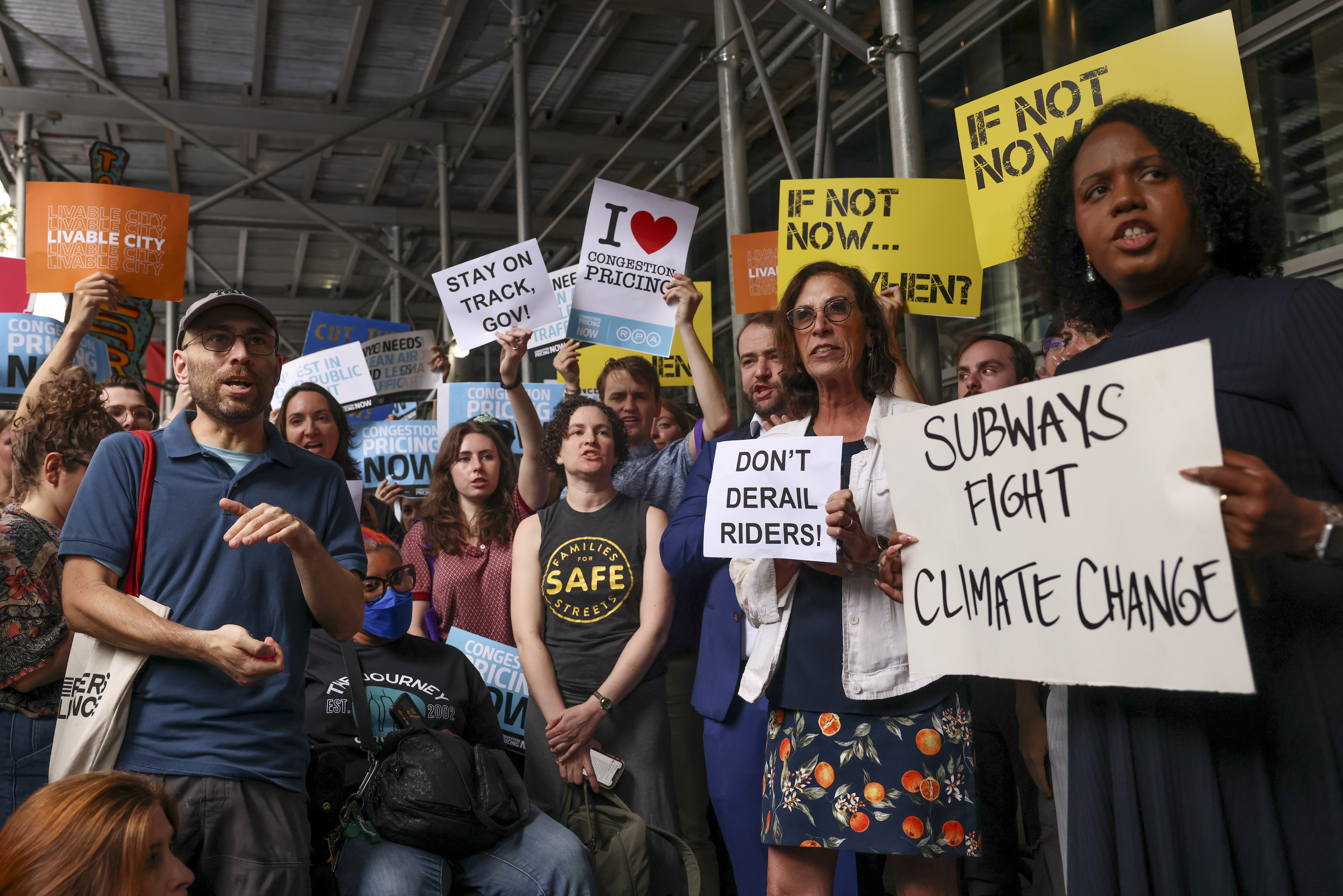Post-Congestion Pricing What's Next for the Riders Alliance?

Danny Pearlstein pictured left outside New York Gov. Kathy Hochul's Manhattan office, Wednesday, June 5, 2024 (AP Photo/Yuki Iwamura)
INTRO: Earlier this month, New York City rolled out congestion pricing, charging drivers a $9 toll during peak hours to enter Manhattan south of 60th Street. The program aims to reduce traffic and fund public transit. WFUV's Andrew McDonald spoke with Danny Pearlstein from the Riders Alliance—a grassroots group of subway and bus riders that led the charge pushing for this policy. Now that it's implemented they discussed what’s next, including improving subway safety and securing more funding for transit projects.
MCDONALD: I'm Andrew McDonald for WFUV News, and I'm here speaking with Danny Perlstein, Policy and Communications Director from and for the Riders Alliance. Danny, thank you for being here with me.
PEARLSTEIN: Thanks so much for having me.
MCDONALD: So, one of the expressed goals of congestion pricing is not only to fund but also to incentivize more people to use the subway. But some people don't feel safe on it. What more could be done to make the subway system safer?
PEARLSTEIN: Subway absolutely needs to be safe, welcoming, and inclusive for everybody. Already, we're seeing a shift from the new police commissioner. with more police on the platforms and on the trains, not just at the turnstiles. We also need to see more funding and better coordination of housing and health care services. So the most vulnerable New Yorkers aren't using the subway as a place of last resort.
MCDONALD: When bringing and implementing congestion pricing to New York, many have brought up the success of London's congestion charge. What lessons could New York take from London and other cities' policies?
PEARLSTEIN: The most important thing now that we have congestion pricing in place is to study it, see that it's working well, and tweak it to make it work even better. You know, we went through an exhaustive environmental review, which is unique to American law, and that meant it was very, very easy. fully vetted, but now that it's in place, you know, we can build upon it and improve it further.
MCDONALD: The Riders Alliance, for years has been one of the major forces pushing for congestion pricing and now that it's implemented, what is the Riders Alliance's next major battle?
PEARLSTEIN: The subway. Is still not fixed, and we're going to hold our elected officials, starting with the governor and the MTA leaders accountable for doing the essential work we need for a modern, reliable, accessible subway, as well as going back to the legislature, frankly, beginning in just a few weeks for more transit funding because there's a new administration. Public transit capital program coming online, and we need to make sure those projects are funded. That's more reliability on accessibility projects, those are power systems, structures, you know, work to make sure that the subway works for the next 100 years, just like the last 100. Obviously, New Yorkers don't just ride the subway. We also take buses. There's over 2 million bus riders every single day. We need faster and more reliable service. And you know, especially from the perspective of the Bronx, we need better service cross town on Fordham Road, on Tremont Avenue, and we're looking to the city to make those bus improvements as quickly as possible.
MCDONALD: Danny Perlstein from the Riders Alliance, thank you for talking with me.
PEARLSTEIN: Thank you so much. Anytime.
OUTRO: That was WFUV's Andrew McDonald talking with Danny Pearlstein with the Riders Alliance.

